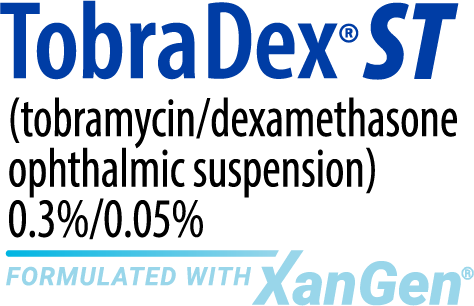Case 1: A 41-Year-Old Female With Eye Redness
This program is sponsored by Santen.
Jodi Luchs, MD, FACS
Associate Clinical Professor of Ophthalmology
Hofstra Northwell School of Medicine
Chief Science Advisor
InFocus Capital Partners
Florida Vision Institute
West Palm Beach, Florida

Indication and Usage
For steroid responsive inflammatory ocular conditions of the palpebral and bulbar conjunctiva, cornea, and anterior segment of the globe and chronic anterior uveitis, corneal injury from chemical, radiation or thermal burns, or penetration of foreign bodies for which a corticosteroid is indicated and where the risk of superficial bacterial ocular infection is high or where there is an expectation that potentially dangerous numbers of bacteria will be present in the eye.
Important Safety Information
CONTRAINDICATIONS:
Most viral disease of the cornea and conjunctiva including epithelial herpes simplex keratitis (dendritic keratitis), vaccinia, and varicella, and also in mycobacterial infection of the eye and fungal disease of ocular structures. Hypersensitivity to any components of the medication.
WARNINGS & PRECAUTIONS:
- IOP increase — Prolonged use may result in glaucoma with damage to the optic nerve, defects in visual acuity and fields of vision. IOP should be monitored.
- Aminoglycoside sensitivity — Sensitivity to topically applied aminoglycosides may occur.
- Cataracts — Posterior subcapsular cataract formation may occur.
- Delayed healing — May delay healing and increase the incidence of bleb formation. Perforations of the cornea or sclera have occurred. Slit lamp biomicroscopy, and fluorescein staining should be conducted.
- Bacterial infections — May suppress host response and increase secondary ocular infections. In acute purulent conditions, steroids may mask infection or enhance existing infection. If signs and symptoms fail to improve after 2 days, the patient should be re-evaluated.
- Viral infections — Use with history of herpes simplex requires great caution. The course and severity of many viral infections of the eye (including herpes simplex) may be exacerbated.
- Fungal infections — Fungal infections of the cornea may occur and should be considered in any persistent corneal ulceration.
- Use with systemic aminoglycosides — Total serum concentration of tobramycin should be monitored.
ADVERSE REACTIONS:
The most frequent adverse reactions (<4%) to topical ocular tobramycin are hypersensitivity and localized ocular toxicity, including eye pain, eyelid pruritus, eyelid edema, and conjunctival hyperemia.
The reactions due to the steroid component are increased intraocular pressure with possible development of glaucoma, and infrequent optic nerve disorder; subcapsular cataract; and impaired healing.
The development of secondary infection has occurred. Fungal infections of the cornea may occur. Secondary bacterial ocular infection following suppression of host responses also occurs.
Non-ocular adverse events (0.5% to 1%) included headache and increased blood pressure.
Please see the Full Prescribing Information.
2 Commerce Drive
Cranbury, NJ 08512
All rights reserved.